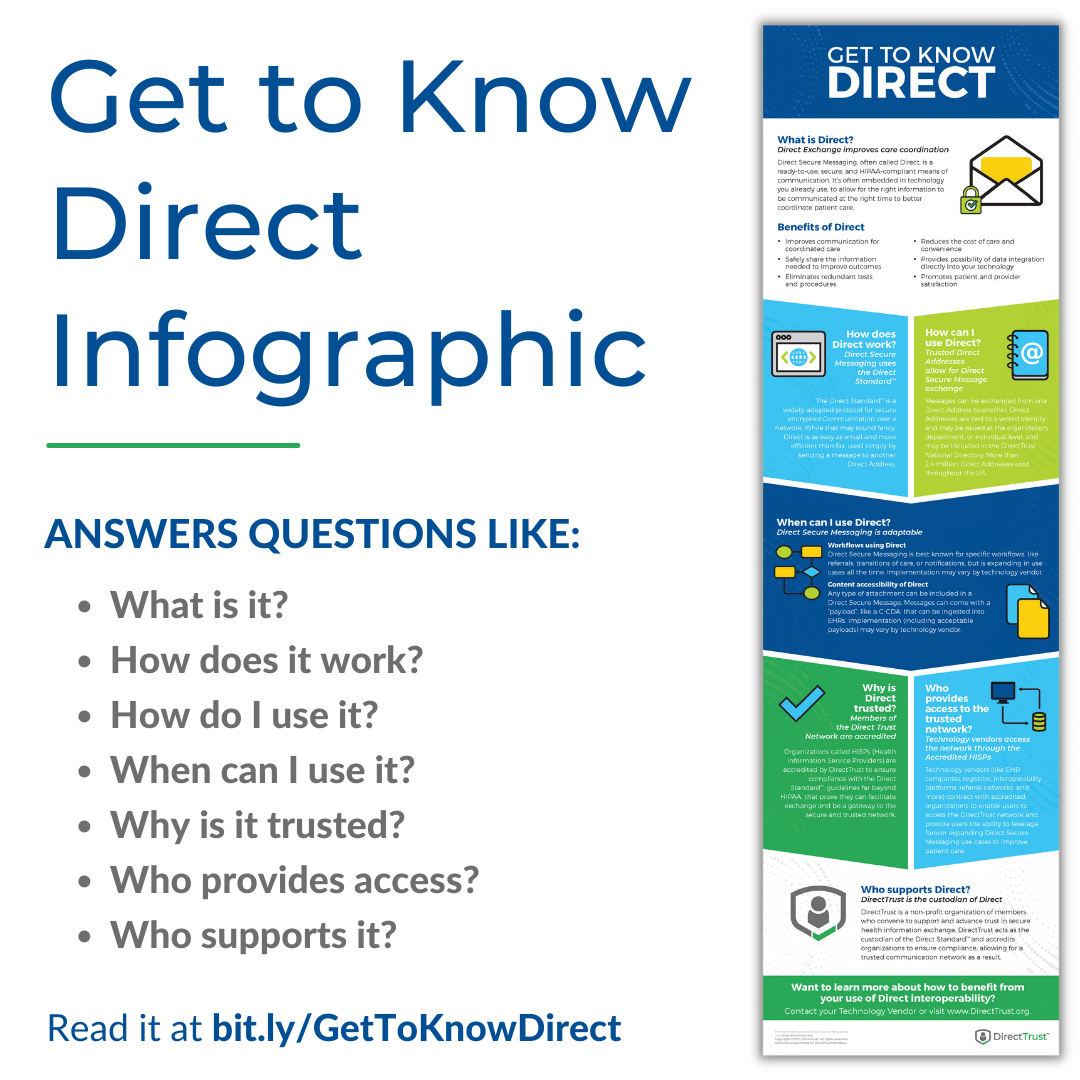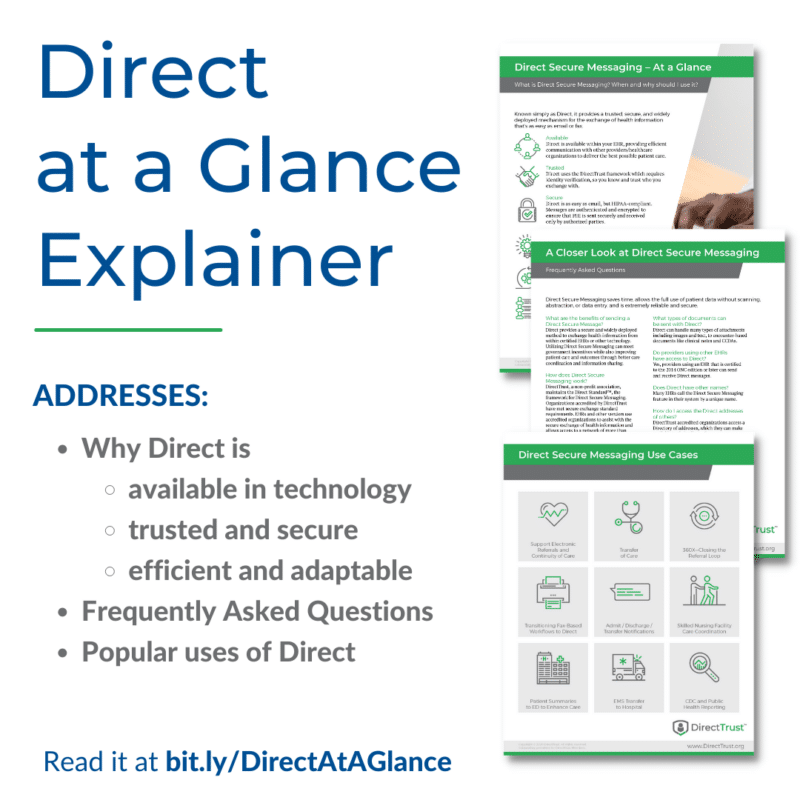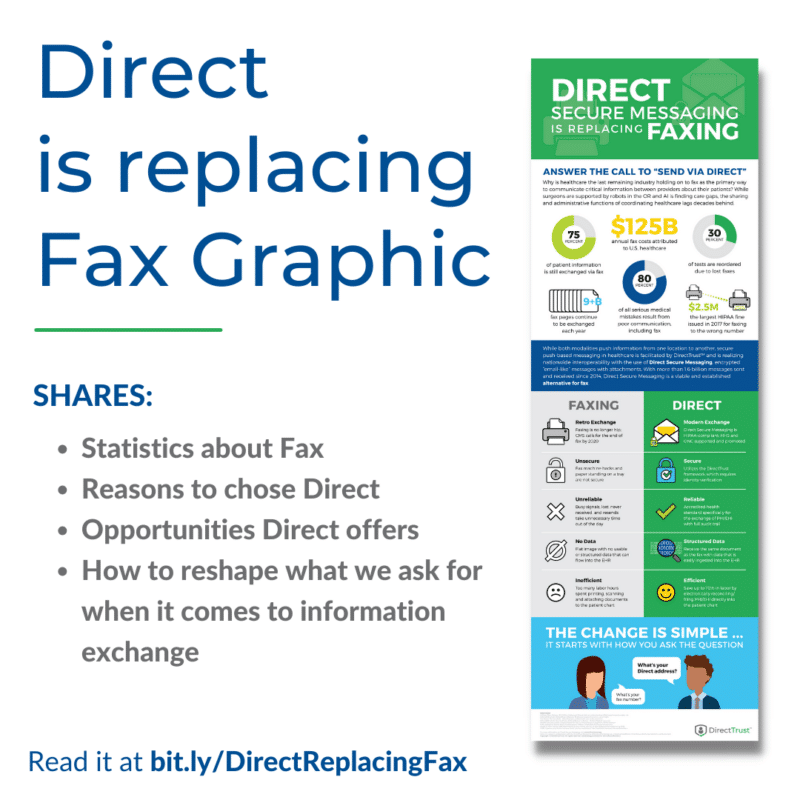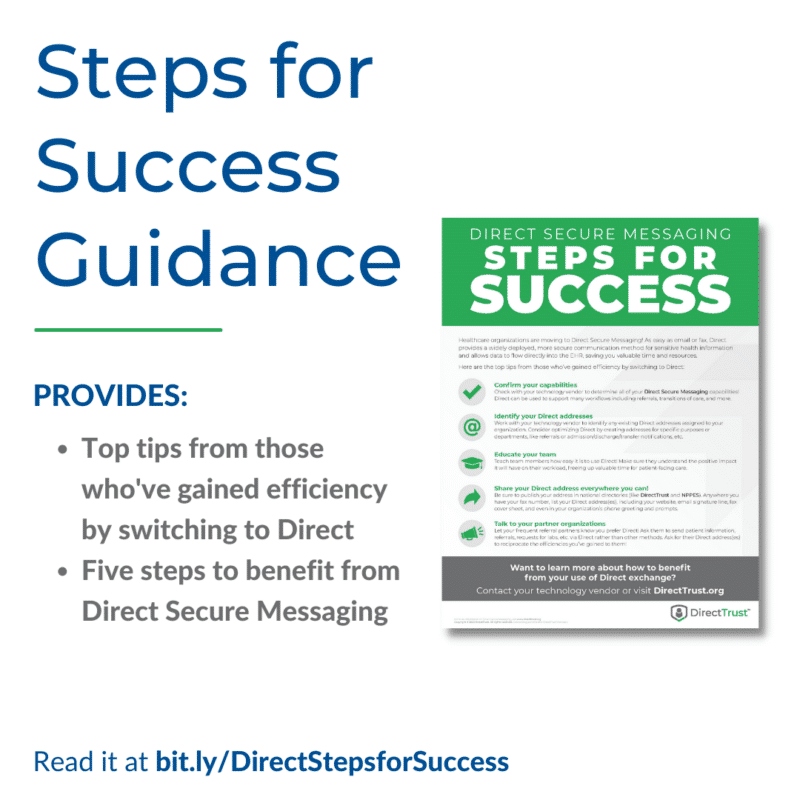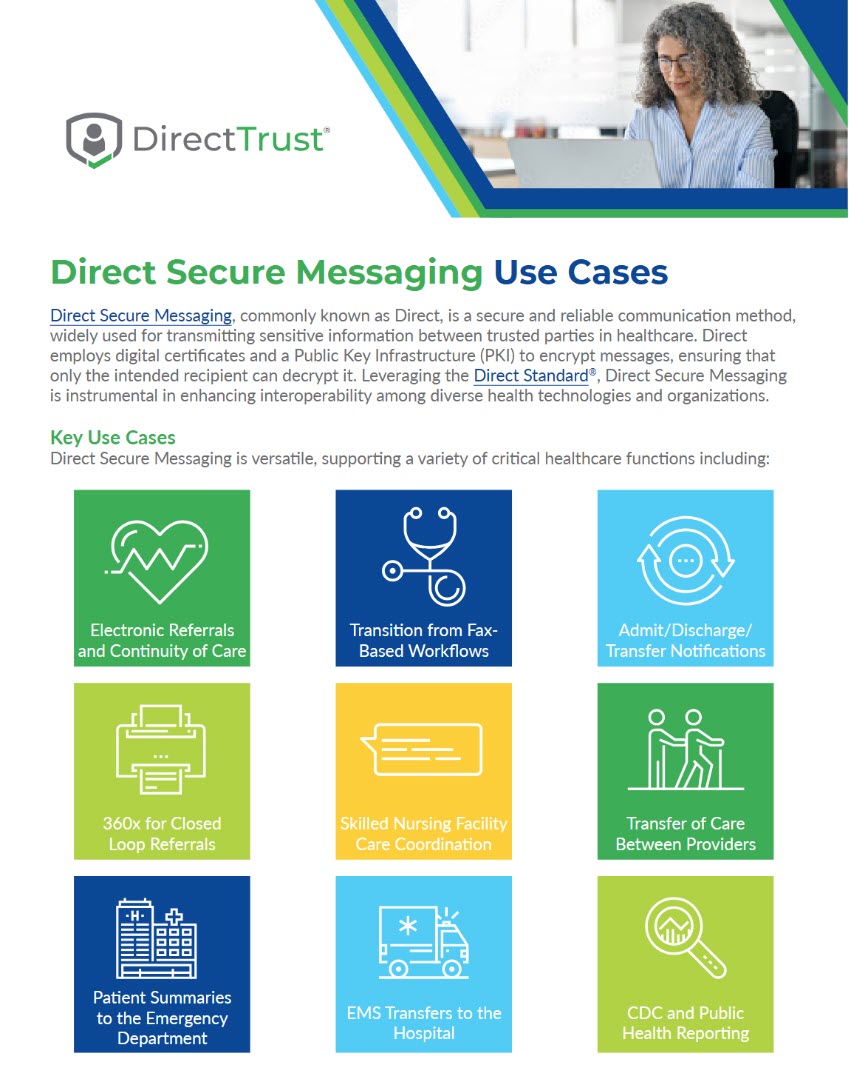Direct Secure Messaging
Secure and trusted health information exchange is fueled by the Direct Standard® and our robust national network
About Direct Secure Messaging
Direct Secure Messaging, commonly referred to as Direct, is a secure communication transport mechanism for sensitive information over the open internet. While appearing like email, Direct Secure Messaging utilizes digital certificates and a Public Key Infrastructure (PKI) to encrypt the contents of a message, meaning only the intended recipient can decrypt the message. Today, Direct Secure Messaging utilizes the foundation of the Direct Standard®, and is a widely deployed and accessible means for communicating sensitive health information to other trusted parties. Considered a “push” interoperability mechanism because of the sender “pushing” a message to the receiver, Direct Secure Messaging is a cornerstone of facilitating interoperability between disparate health technologies and organizations.
Direct Secure Messaging Use Cases
Direct Secure Messaging Resources
Direct Secure Messaging Aliases
Direct Secure Messaging is known by many different names across the industry: Direct, DIRECT, The Direct Protocol, The Direct Standard®, The Direct Project, Direct exchange, Direct Messaging, and many more. We’ve highlighted some of the different names you may know Direct Secure Messaging as by different EHR/Technology vendor below.
| EHR/Technology Vendor | Alternate Terms |
|---|---|
| Allscripts | Direct |
| athenahealth | Direct, Direct Messaging, Secure Messaging |
| Brightree | Direct Secure Messaging, eReferral |
| Cerner | Cerner Direct, Secure Messaging, Direct Referrals, Direct Email, Direct Secure Messaging, Direct |
| CPSI | Direct Message, Direct Messaging, Transition of Care, TOC |
| eClinicalWorks | eClinicalDirect, P2P, Provider to Provider, Direct, Direct Secure Messaging, Direct Plus |
| EMR Direct | phiMail, Interoperability Engine, Direct, Direct Address, Direct Messaging, Direct Exchange, XD HISP service, SMTP HISP service |
| Epic | Care Everywhere, Care Everywhere Outside Messaging, CE Outside Messaging, Direct Messaging, Direct Protocol |
| Evident (Centriq) | Secure Messaging |
| Glenwood Systems | Direct Messaging |
| Greenway | Direct messaging |
| iShare Medical | iShare Medical Messaging |
| MatrixCare | DIRECT |
| MEDITECH | Direct Messaging |
| Netsmart | CareConnect Inbox |
| NextGen | NextGen Share, Direct Messaging |
| PointClickCare | Integrated Direct Messaging |
| Wellsky | Wellsky IaaS, Wellsky IO, Wellsky Direct |



